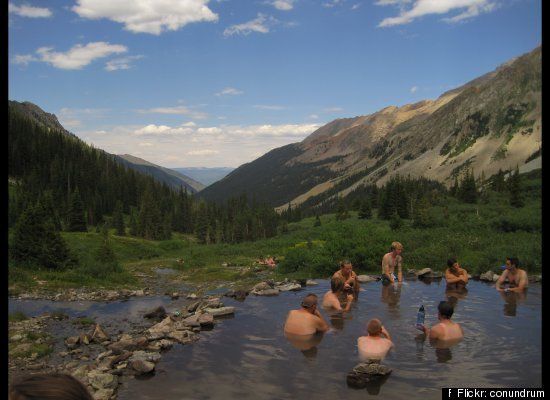
As the ongoing federal budget battle rages on, is the bell about to toll for our national parks? Our national parks are among America's most fundamental assets -- admired and cherished by millions throughout the world. For less than one thirteenth of one percent of the federal budget, national parks bring tremendous value to communities nationwide. Every dollar invested in our national parks returns at least $4 to our economy, and national parks like Yellowstone, Great Smoky Mountains, and Mount Rushmore strengthen our quality of life by producing lasting memories for families and friends. Yet, the core needs of our parks and their visitors are now vulnerable to future rounds of budget cuts.
National parks comprise a tiny subset of the 12 percent of domestic discretionary spending. This small "discretionary" portion of the budget is the focus of the fight over current year funding levels, rather than the more significant 88 percent of the deficit-influencing portion of the budget or the related question of revenues. As members of Congress argue over cutting the smallest portion of the federal budget, we must ensure our national parks have the funds they need to welcome you and your family this summer.
Only a few short years ago, the fiscal crisis of our national parks converted park rangers into endangered species, reduced visitors services to the public, and impaired park resources like wildlife, dinosaur fossils and historical artifacts. The crisis led to a bipartisan initiative to restore park operations funding -- started by the Bush administration and continued by the Obama administration. A group of notable Americans who served on the National Parks Second Century Commission highlighted the need to continue the effort, which has now stalled and is threatened with reversal. The question for today is whether we are on the brink of returning to that crisis, or whether we will learn from those lessons of the recent past to protect our national heritage.
The most recent round of budget cuts reduced National Park Service programs by $100 million, including nearly $50 million from the job-producing construction budget when new estimates show the parks' maintenance backlog at nearly $11 billion. And with an annual operating shortfall exceeding $600 million, left unresolved is the operational funding the national parks will receive to serve the public as they gear up for their summer season. The parks have given enough.
According to a recent poll, more than nine in ten Americans have visited a national park. Nearly seven in ten believe that it is extremely important to protect and support major parks such as Yellowstone and the Everglades despite concerns about the current economic situation and the federal budget. People love places like Yosemite and Gettysburg because they protect our heritage and teach us about the sacrifices our ancestors made to keep this country strong. People expect our national parks to be cared for and not left in disrepair.
Providing an adequate budget for our national parks will ensure that rangers are there to greet visitors and protect America's heritage for our children and grandchildren to enjoy. Operations dollars are essential to fund important jobs like seasonal park rangers, many of whom are hired from surrounding communities and support local communities that benefit from their spending -- the same rangers who help provide visitors with a special, memorable experience.
Nearly 280 million people visit our national parks annually, spending money and producing jobs in gateway communities. A recent study found that every dollar invested in national parks generates at least four dollars of economic value to the public. National parks support $13.3 billion of direct local private-sector economic activity and nearly 270,000 private-sector jobs. This should be no surprise, given that people travel from throughout the world to visit our national parks. According to Forbes.com, eight of the top 25 U.S. travel destinations are national parks. Visitors to places like the Statue of Liberty and Old Faithful are helping our economy.
Our national parks connect urban communities to parks like Gateway National Recreation Area in New York City, they teach younger generations about our history at places like Independence Hall in Philadelphia, and they help us keep in touch with our fundamental identity as Americans... with every dollar invested in them putting an additional four dollars in our pockets.
As Theodore Roosevelt observed, "It is not what we have that will make us a great nation; it is the way in which we use it." We must ensure the places that protect America's heritage and draw tourists from throughout the world are adequately funded for future generations to enjoy.
